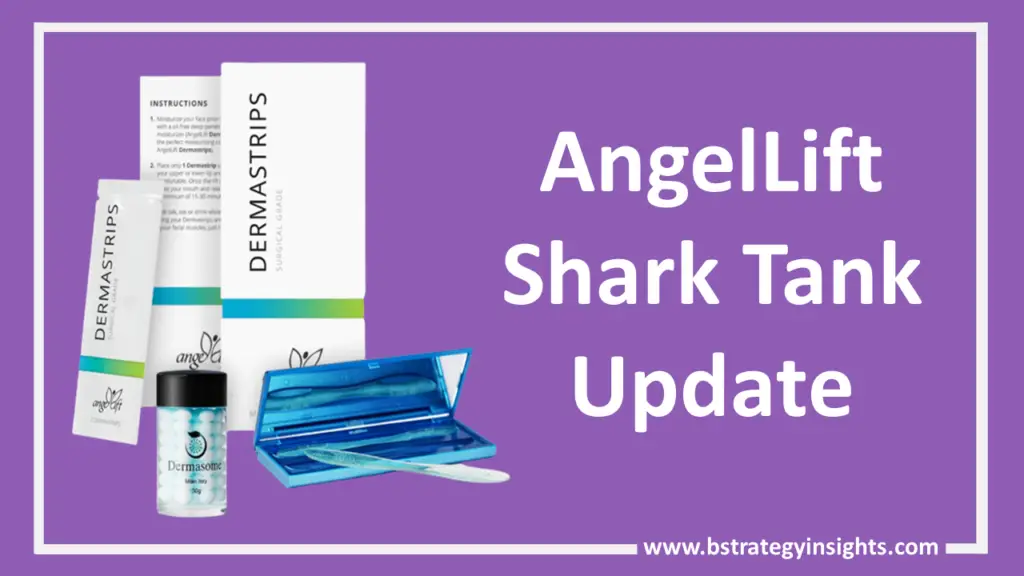
LifeBelt was a Shark Tank debut idea by Robert Allison, a resident of Las Vegas, Nevada. Allison pitched this device as a lifesaver seeking to prevent the loss of lives due to road accidents. He sort for $500,000 in exchange for a 10% stake in the venture on Shark Tank.
Allison appeared on the first season of the Shark Tank second episode in 2009. During the pitch, he receives an offer of $500K and $1 million from Kevin O’Leary and Robert Herjavec, respectively. However, he turned down the two offers.
In the end, he left Shark Tank without a deal. But how was LifeBelt before, during, and after Shark Tank? Read on to get updates on its state in 2022.
LifeBlet Overview in Shark Tank
| Company Name | LifeBelt |
| Episode | Season 1 Episode 22 |
| Product Offering | Device To Prevent People To Drive without Seat Belts |
| Founded | 2009 |
| Founder | Robert Allison |
| Required Investment | $500,000 For 10% equity stake in LifeBelt |
| Closing Deal | No Deal |
| Shark | No Shark |
| Current Business Status | Out of Business |
What was LifeBelt?
LifeBelt was an innovative device that sort to enhance automotive safety. The device featured a technological aspect that prevented automobiles from starting if the driver did not have a seat belt. The devices were to be installed or built-in on every automobile.
Robert Allison, the proprietor of this device, goal was to reduce road accidents and deaths, particularly among teenagers. LifeBelt ensured that every passenger had a seat belt before the car started. Also, it could alarm and shut the engine when one of the passengers unbuckles their seat belt. The success of LifeBelt could mean few deaths from reckless driving.
What Inspired Robert Allison to come up with this device?
As noted, Robert Allison was the founder and proprietor of LifeBelt. His innovation came after the death of a close friend due to a reckless driving accident. This incident inspired him to develop a way of preventing reckless driving. The device was to ensure that every driver on the road takes necessary safety precautions.
Allison’s initial target was his co-workers and parents. He didn’t imagine losing another person on the roads. Also, he expanded the target to school buses to ensure students are safe. For this reason, he started offering the device in a local shop.
After a year of testing and assessing the effectiveness of LifeBelt, Alison decided to expand his reach and target more automobiles. But this was not possible without adequate capital investment. This aspect inspired him to pitch the idea on Shark Tank.
How was LifeBelt before Shark Tank?
Before pitching his idea on Shark Tank, Allison created an informative website for LifeBelt. Dubbed NoBuckleNoStart.com, this website had information on the device’s installation, functionality, troubleshooting, and warranty.
It stated that one required a specialist to install this device on their automobile. The site featured a detailed manual on how one can operationalize this device. It had directions and instructions on the installation procedures and alarms to warn the users.
Also, there was educative information targeting teenage drivers. All information was easy for any driver to read and understand. The goal was to make LifeBelt easy to use for drivers regardless of their age and experience. Robert had already started selling it in local stores. However, no option for ordering or purchasing LifeBelt on the website.
LifeBelt Shark Tank Pitch
Robert Allison appeared on the first season of the second Shark Tank episode to pitch his LifeBelt idea. The goal was to secure funding of $500,000 in exchange for a 10% stake.
Allison prepared a pre-pitch video that featured LifeBelt in use. He had fitted the device on a pickup truck, and his son was the driver. The truck could not start until the son buckled the seat belt. This aspect attracts Shark Tank investors.
Next, Allison explains the idea behind the LifeBelt device and why it is necessary. He demonstrates the ease of use where anyone would have zero to few installation challenges. Also, he states that he offers the device at $229 at his repair shop. He requested for $500,000 investment to scale the LifeBelt reach, where the investor was to get a 10% stake in the company.
However, Allison was not willing to sell the patent and copyright of his company. When asked why he is yet to approach or work with automotive manufacturers, Allison states that he had already approached three manufacturers. But the idea could not align with his goal. He feared that the manufacturers would take years to operationalize the concept, which was against his desires.
Allison featured the idea in the presence of five Shark Tank investors. Three saw no sense in it, while two showed interest and were willing to invest in it in exchange for patent and copyright.
Barbara was the first investor to doubt the takeoff of this idea. According to her, there was no possibility for Allison to sell more Lifebelt devices. So, she opted out.
Daymond John was the next Shark Tank investor to poke holes in Allison’s pitch. He stated that this idea was hard to operationalize without a deal with an automobile manufacturer. He, too, opted out. Harrington also opted out as he had an issue with the valuation of the LifeBelt. The three investors questioned the ability of LifeBelt to generate sales.
Kevin O’Leary and Robert Herjavek were the two Shark Tank who expressed interest in the LifeBelt idea. On his part, Kevin offered the requested amount of $500K. However, he wanted to become the company owner meant that Allison had to sell the patent and copyright of LifeBelt to him. This approach was contrary to Allison’s objective. So, he declined the offer.
Robert Herjavek offered similar terms to Kevin. However, he had an offer of $1 million for the LifeBelt patent. Allison declined this offer too. His idea was that selling the patent would mean remaining on the shelves for long.
Allison desired to make LifeBelt a big brand and be the face behind it. In essence, he stated that he was not willing to exchange the patent even for $30 million. As such, Robert Allison exited Shark Tank without securing any deal.
LifeBelt after Shark Tank
Though the Shark Tank ended without a deal, it offered Robert Allison an opportunity to promote Lifebelt. This aspect attracted many local and national automobile retailers such as Hendrick Automotive and Autozone. Robert estimated that the potential revenue from these merchants’ orders amounted to $30 million by the end of 2010.
At the same time, he secured a $1.7 million deal with Gillman Automotive Group. This company was willing to follow his desire to fix the device to as many automobiles as possible. The investor was ready to start selling it to current car clients. They promised to install it on both new and old cars. Also, it was available for purchase on leading websites such as Safety Mum Direct though for a short period.
However, after signing the deal, LifeBelt’s idea seems to have gone under. Neither LifeBelt nor Gillman offered it on their websites. Also, no Gillman dealership websites feature these products.
The Facebook updates of the LifeBelt page lastly took place in 2010. So, no signs of it being promoted or marketed online. The status of its availability in the Gillman store is inconclusive. It seemed as if the deal with Gillman was the only thing Robert wanted.
Updates: LifeBelt Status in 2022
As the three Shark Tank (Barbara, Daymond, and Harrington) opted out of the LifeBelt pitch foresaw, generating sales from this device was an issue. This aspect might be why the new investor does not offer it in their online stores or dealership sites.
13 years down the line since leaving Shark Tank without a deal, LifeBelt seems like a mirage. It is not a big brand as Robert Allison had planned. The initial LifeBelt website NoBuckleNostart.com is no longer available.
Personal research found that the company shut down in 2016. What seemed like a big idea and a lifesaver is now a gone idea. There is no known information on the device’s current state under the ownership of Gillman as it is not among the listed products on their homepage and dealership websites.
Wrapping up
As noted, LifeBelt was an amazing idea that made its debut on Shark Tank. It was among the popular pitches in the second episode of Shark Tank 2009 season one. Its founder Robert Allison was keen to offer a lasting solution to many reckless driving accidents. The LifeBelt device could ensure passengers and drivers follow all safety precautions by having their seat belts buckled throughout the road travels.
However, LifeBelt failed to secure a deal on the pitch. Robert could not agree with the potential investors’ offer of purchasing the product’s patent. He desired to see the device working on many cars as possible within a short duration. Money was nothing to him compared t the overall benefits to the device users.
Despite failing to succeed, Shark Tank was a good opportunity for LifeBelt exposure. The aftermath of this pitch was multi-million dollar orders from automotive merchants. Also, it enabled Robert to secure a $1.7 million deal with Gillman Group. But as some investors had casted doubt on the LifeBelt future, the product became a non-starter.
LifeBelt was out of business by 2016, and no information about this product on Gillman and its dealership sites. So, there was no meaningful way of introducing LifeBelt to the market, which could be the reason for its failure.




